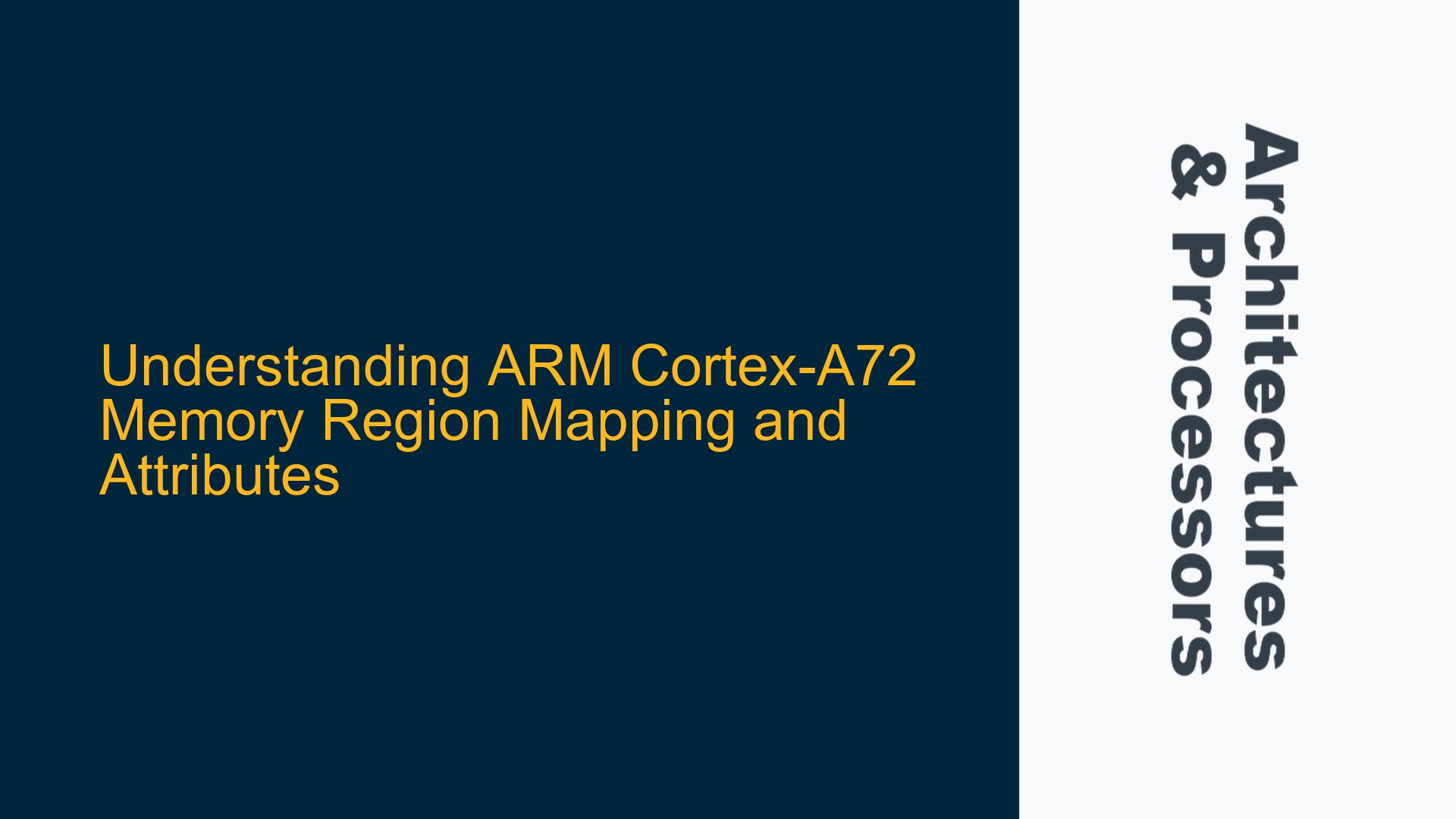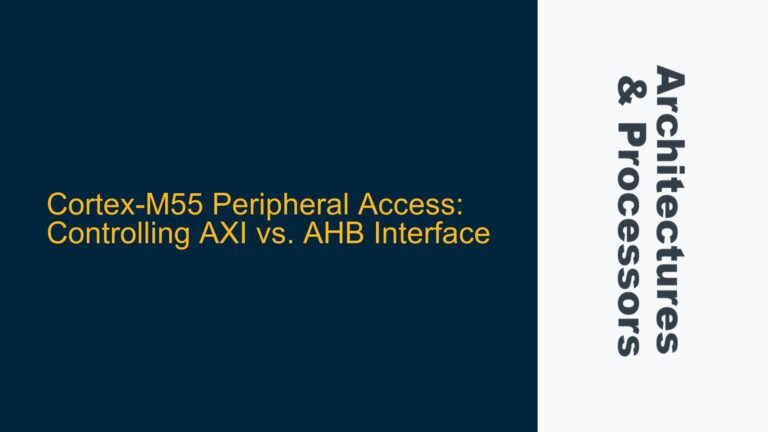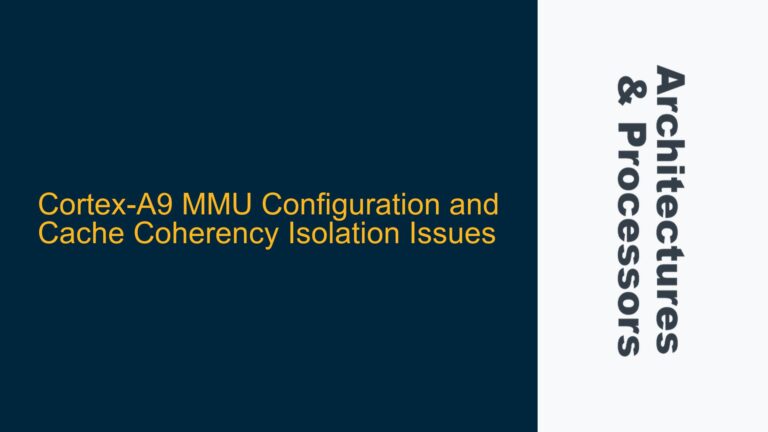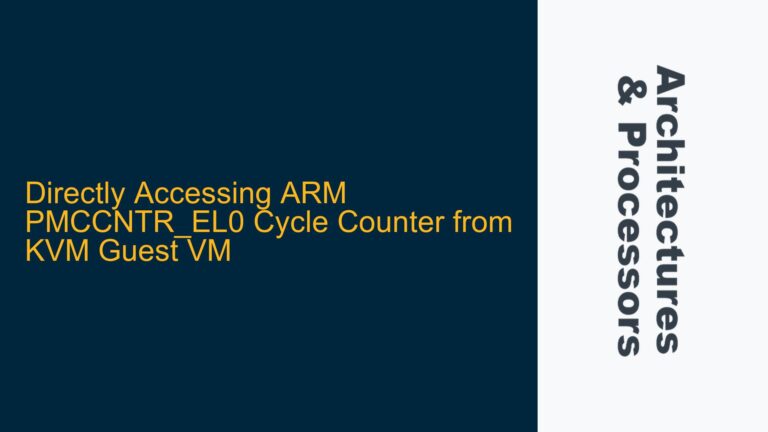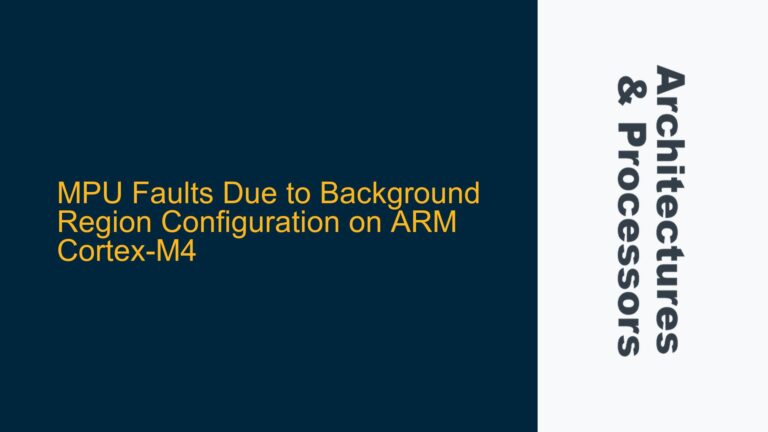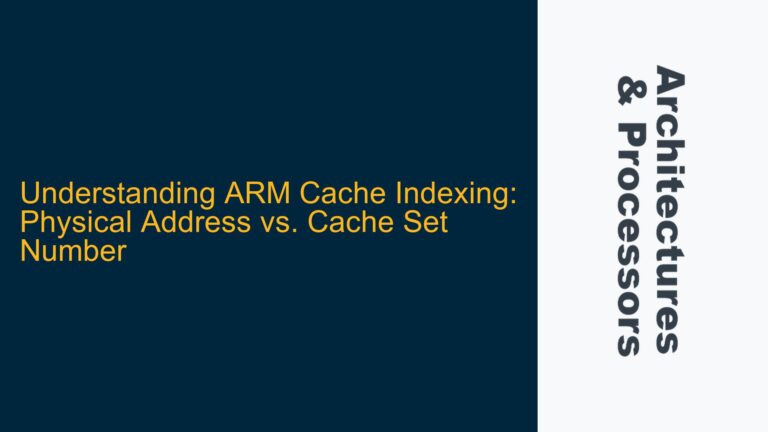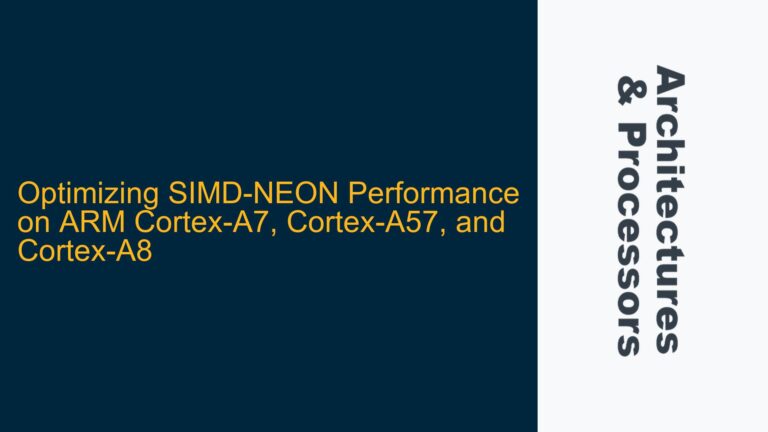ARM Cortex-A72 Memory Region Mapping and Virtual Address Space
The ARM Cortex-A72 is a high-performance processor core designed for applications requiring significant computational power, such as mobile devices, networking equipment, and embedded systems. One of the critical aspects of working with the Cortex-A72 is understanding how memory regions are mapped and how the virtual address space is organized. The Cortex-A72 employs a Memory Management Unit (MMU) to handle virtual-to-physical address translation, which is essential for modern operating systems and applications.
The Cortex-A72 supports a 64-bit address space, allowing for a vast range of memory addresses. However, not all of this address space is used for RAM or cache. The memory map is divided into several regions, each serving a specific purpose. These regions include:
- DRAM (Dynamic Random-Access Memory): This is the main system memory where the operating system and applications store data and code. The DRAM region is typically the largest and is mapped to physical memory.
- Peripheral Memory: This region is reserved for memory-mapped I/O (MMIO) devices. Peripherals such as UART, GPIO, and Ethernet controllers are accessed through this memory region.
- Cache Memory: The Cortex-A72 includes L1 and L2 caches, which are not directly mapped into the address space but are used to speed up access to frequently used data and instructions.
- Secure and Non-Secure Memory: The Cortex-A72 supports TrustZone technology, which divides the memory into secure and non-secure regions. Secure memory is used for sensitive data and code, while non-secure memory is used for general-purpose applications.
The virtual address space is divided into several sections, each with its own attributes and permissions. The MMU uses translation tables to map virtual addresses to physical addresses and to enforce memory access permissions. The translation tables are hierarchical, with multiple levels of page tables that allow for fine-grained control over memory mapping.
Memory Attributes and MMU Translation Tables
Memory attributes in the Cortex-A72 are defined by the MMU translation tables. These attributes control how memory is accessed and cached, and they play a crucial role in system performance and security. The key memory attributes include:
- Memory Type: This attribute defines the type of memory, such as Normal Memory, Device Memory, or Strongly Ordered Memory. Normal Memory is used for RAM and is cacheable, while Device Memory is used for peripherals and is typically non-cacheable. Strongly Ordered Memory is used for memory-mapped I/O devices that require strict ordering of accesses.
- Cacheability: This attribute determines whether a memory region is cacheable or non-cacheable. Cacheable memory regions are stored in the L1 or L2 caches, which can significantly improve performance. Non-cacheable memory regions are accessed directly from the main memory or peripherals.
- Shareability: This attribute defines whether a memory region is shared between multiple cores or processors. Shareable memory regions are used for data that needs to be accessed by multiple cores, such as shared buffers or communication channels.
- Access Permissions: These attributes control which privilege levels (e.g., user or supervisor) can read, write, or execute from a memory region. Access permissions are essential for enforcing security and preventing unauthorized access to sensitive data.
The MMU translation tables are configured by the operating system or firmware during system initialization. Each entry in the translation table contains the physical address, memory attributes, and access permissions for a specific memory region. The Cortex-A72 supports multiple levels of translation tables, allowing for flexible and efficient memory management.
Identifying and Modifying Memory Attributes in User Space
In user space, identifying and modifying memory attributes for a specific variable or array requires an understanding of how the operating system manages memory. The operating system typically provides mechanisms for querying and modifying memory attributes, but these mechanisms are often limited to privileged code (e.g., kernel or driver code). However, there are ways to influence memory attributes from user space, especially when working with embedded systems or custom firmware.
One approach is to use a linker script to define a specific memory section with fixed address and size. This section can be used as a buffer, and its memory attributes can be controlled by modifying the MMU translation tables. For example, you can create a section in the linker script with a specific name and address range:
MEMORY
{
CUSTOM_BUFFER (rwx) : ORIGIN = 0x10000000, LENGTH = 0x1000
}
SECTIONS
{
.custom_buffer : {
*(.custom_buffer)
} > CUSTOM_BUFFER
}
In your code, you can then use a pointer to access this buffer:
extern uint8_t custom_buffer[4096];
To modify the memory attributes of this buffer, you would need to access the MMU translation tables. This typically requires privileged access, so it is usually done in kernel or firmware code. However, some operating systems provide system calls or ioctls that allow user-space applications to modify memory attributes for specific regions.
For example, on Linux, you can use the mprotect system call to change the access permissions of a memory region:
#include <sys/mman.h>
int mprotect(void *addr, size_t len, int prot);
The prot parameter specifies the new access permissions, such as PROT_READ, PROT_WRITE, and PROT_EXEC. However, mprotect does not allow you to change other memory attributes, such as cacheability or shareability. For more advanced memory management, you would need to use kernel modules or custom firmware.
Another approach is to use the mmap system call to map a specific memory region with custom attributes:
#include <sys/mman.h>
void *mmap(void *addr, size_t length, int prot, int flags, int fd, off_t offset);
The flags parameter can be used to specify memory attributes, such as MAP_SHARED or MAP_PRIVATE. However, like mprotect, mmap does not provide full control over all memory attributes.
In summary, identifying and modifying memory attributes in user space requires a combination of linker script configuration, system calls, and potentially kernel or firmware support. While the operating system provides some mechanisms for managing memory attributes, full control typically requires privileged access and a deep understanding of the Cortex-A72 memory management architecture.
Implementing Custom Memory Management for Cortex-A72
For developers working on embedded systems or custom firmware, implementing custom memory management for the Cortex-A72 can provide significant benefits in terms of performance and flexibility. Custom memory management allows you to optimize memory usage for specific applications, enforce security policies, and control memory attributes at a fine-grained level.
The first step in implementing custom memory management is to configure the MMU translation tables. The Cortex-A72 uses a multi-level translation table scheme, with up to four levels of page tables. Each level of the translation table divides the virtual address space into smaller sections, allowing for flexible and efficient memory mapping.
The translation table entries contain the physical address, memory attributes, and access permissions for each memory region. The exact format of the translation table entries depends on the translation table level and the memory attributes being configured. For example, a level 1 translation table entry might define a 1GB memory region with specific attributes, while a level 3 translation table entry might define a 4KB memory page with different attributes.
To configure the translation tables, you need to write to the appropriate system registers. The Cortex-A72 provides several system registers for managing the MMU, including:
- TTBR0_EL1 and TTBR1_EL1: These registers contain the base addresses of the translation tables for the lower and upper halves of the virtual address space, respectively.
- TCR_EL1: This register controls the size and configuration of the translation tables, including the granule size (e.g., 4KB, 16KB, or 64KB) and the number of levels in the translation table hierarchy.
- MAIR_EL1: This register defines the memory attribute indirection registers, which are used to specify the memory attributes for different memory types.
Once the translation tables are configured, you can enable the MMU by setting the appropriate bits in the system control register (SCTLR_EL1). Enabling the MMU activates the virtual-to-physical address translation and enforces the memory attributes and access permissions defined in the translation tables.
In addition to configuring the MMU, custom memory management may also involve managing the caches. The Cortex-A72 includes L1 and L2 caches, which are used to speed up access to frequently used data and instructions. Cache management is essential for ensuring data consistency and optimizing performance.
The Cortex-A72 provides several instructions for cache management, including:
- DC CVAU (Data Cache Clean by Virtual Address to Point of Unification): This instruction cleans the data cache for a specific virtual address, ensuring that any modified data is written back to main memory.
- DC CIVAC (Data Cache Clean and Invalidate by Virtual Address to Point of Coherency): This instruction cleans and invalidates the data cache for a specific virtual address, ensuring that the cache is consistent with main memory.
- IC IALLU (Instruction Cache Invalidate All to Point of Unification): This instruction invalidates the entire instruction cache, ensuring that any stale instructions are removed from the cache.
Cache management is particularly important when working with DMA (Direct Memory Access) or shared memory regions. In these cases, you need to ensure that the caches are consistent with the main memory to avoid data corruption or stale data.
In conclusion, implementing custom memory management for the Cortex-A72 requires a deep understanding of the MMU translation tables, memory attributes, and cache management. By configuring the translation tables and managing the caches, you can optimize memory usage, enforce security policies, and control memory attributes at a fine-grained level. This level of control is essential for developing high-performance and secure embedded systems on the Cortex-A72 platform.
